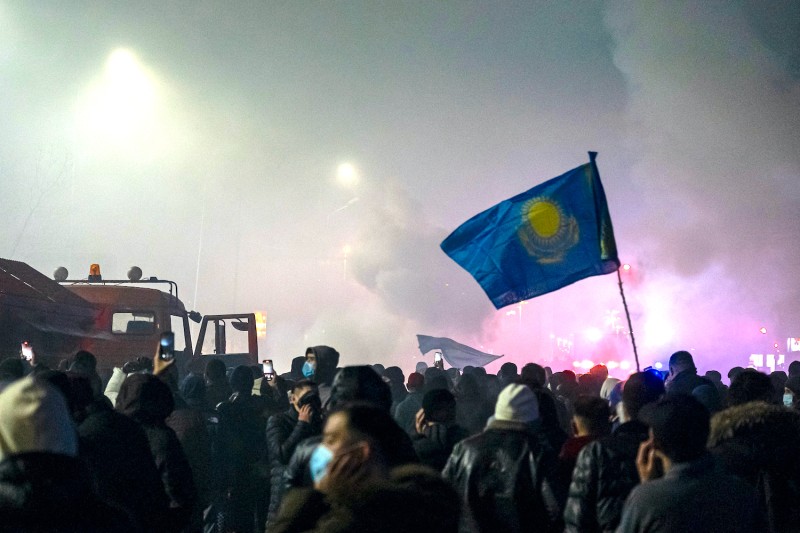Chaos in Kazakhstan
January 17, 2022
Early into 2022, Kazakhstan is facing unrest with the biggest crisis it has had since it gained independence from the Soviet Union in 1991. Initially, peaceful protests occurred in the city Zhanaozen in response to their government lifting fuel prices. The protests quickly spread to other cities in Kazakhstan, including their capital, Almaty. Similarly, the demands of Kazakhs escalated from protesting the raised fuel prices to demanding a voice in their government: citizens are now proposing to elect their regional leaders rather than having them chosen by their president. Much anger is also directed towards the former president, Nursultan Nazarbayev, who still has an honorary title and overwhelming power behind the scenes in Kazakhstan.
Some Context
Kazakhstan is a former Soviet republic in Central Asia, and 60% of its GDP comes from its thriving oil and gas industry, making it the richest country in Central Asia. Despite this, poverty and unemployment rates run high. Kazakhs’ discontentment with their government has existed long prior to these recent events, as the Kazakhstan government is highly authoritarian and caters to the elites (which has only worsened since the pandemic). To the western world up until now, Kazakhstan has been perceived as a stable country in an otherwise unstable region—economically and politically speaking—so the sudden eruption of unrest was quite shocking. However, the turmoil occurring sheds light on how the perceived “stability” of this Central Asian country is due to its oppressive government, and the raised fuel prices were simply the breaking point for the already-vexed Kazakhs.
Violent Protests, Coup and Countercoup, and Russian Forces?
Early on, the current president of Kazakhstan, Kassym-Jomart Tokayev, issued public statements with a threatening edge, such as warning young Kazakhs to not “destroy their own future”. The government has also imposed internet blackouts, banning all social media. All this has only contributed to more anger and more support for the protests. Most confusing of it all is the wide range of groups mixed in with the peaceful protestors, which includes rioters, youth leaders, old-guard opposition leaders, and opportunists, leading to looting and destruction across the country. And unfortunately, the internet blackouts are adding to the confusion of exactly which groups are involved and what exactly is occurring in Kazakhstan.
Amidst all this is a power struggle between current President Tokayev and former President Nazarbayev. Tokayev essentially initiated a “coup” to remove the former President’s vestigial power and take over all national security administrations, and in retaliation, supporters of Nazarbayev stormed state institutions as a “countercoup”. With this, Russia then enters into this conflict when Tokayev appealed for help to CSTO (Collective Security Treaty Organization), spinning the narrative that there are “bands of terrorists” within the country. His supposed goal was to quell the protests as well as crush Nazarbayev’s forces. His order to “fire without warning” to the security forces has led to about 225 deaths by January 15 and hundreds more injured. But throughout all this, Nazarbayev has kept silent, and his whereabouts remain unknown.
The protests have slowly eased, and Russian troops have begun to withdraw. However, the Kazakhstan authorities have not released official tallies, and there is still much confusion about the true state of affairs in the country. The internet blackout has been rescinded, but the main independent news site in Kazakhstan has been blocked. More than 9,800 protestors have been detained so far by the Kazakhstan police, along with some journalists. For the people of Kazakhstan, not much has changed thus far except for the changing of hands of ultimate political power from Nazarbayev to Tokayev.


